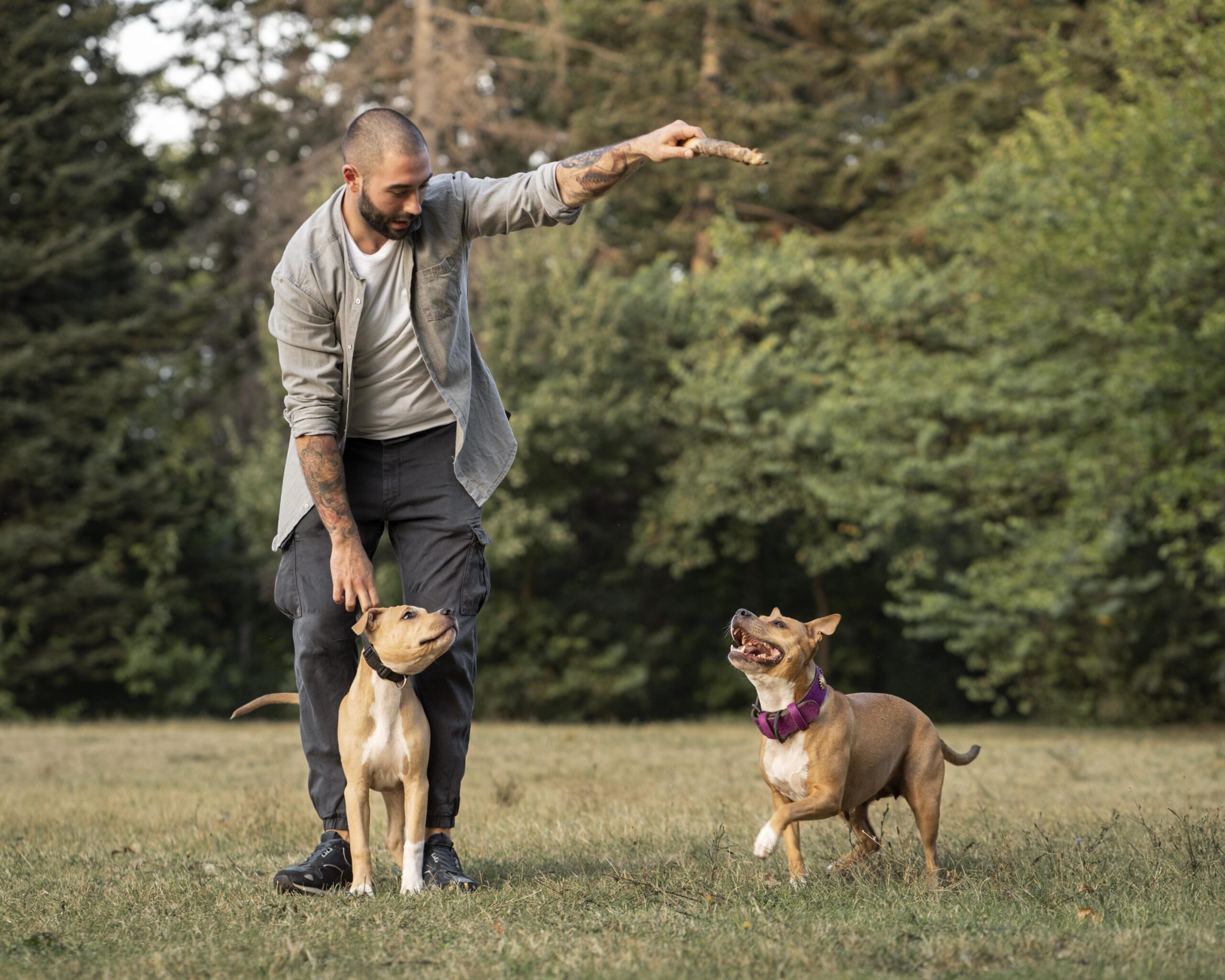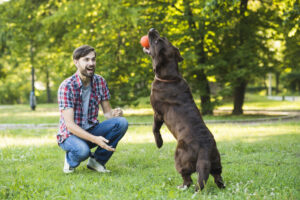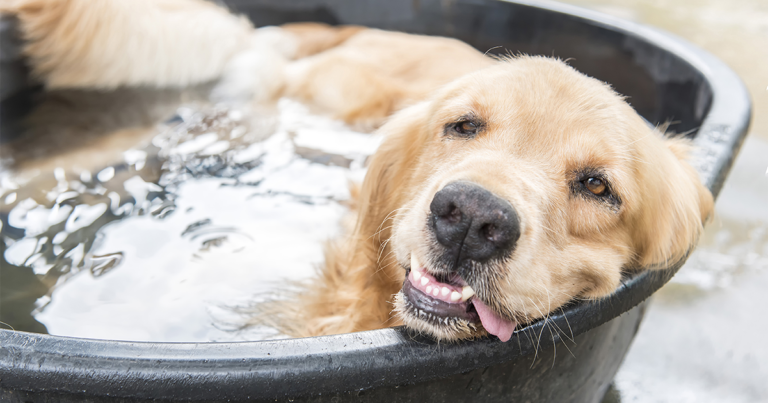Secure Steps: Safeguarding Your Off-Leash Training Experience
Discover the importance of prioritizing safety and implementing effective strategies for secure off-leash training experience and to enhance your dogs well-being and strengthen your bond.
Safety First: Ensuring a Secure Environment During Off-Leash Training
When it comes to off-leash training, safety is paramount for both the dog and the owner. One common risk associated with off-leash training is the potential for a dog to run away, especially when in unfamiliar surroundings or when encountering other dogs. To mitigate this risk, it is crucial to practice recall games consistently. For example, playing hide and seek with your dog can reinforce their recall skills and ensure they respond promptly when called. Additionally, incorporating safety behaviors like “leave it” and “distance down” can help manage unexpected situations during off-leash sessions, enhancing the overall safety of the training experience.
Another important aspect of ensuring a secure environment during off-leash training is being prepared for emergency situations. Dogs can sometimes get into conflicts with other animals or face unexpected hazards. By understanding potential behavioral challenges and having a plan in place for emergencies, such as carrying a first aid kit and knowing the nearest veterinary clinic, owners can better protect their dogs during off-leash sessions. This level of preparedness not only enhances safety but also instills confidence in the owner, creating a positive training environment for the dog.
Moreover, effective off-leash training involves gradually increasing distractions to build a reliable recall and response in various environments. By starting in low-distraction settings and progressively introducing more stimuli, such as other dogs or wildlife, dogs learn to focus on their owner’s commands even in challenging situations. This approach not only strengthens the dog’s obedience but also fosters a deeper bond between the dog and the owner, based on trust and clear communication. By incorporating these strategies, owners can create a secure environment for off-leash training, ensuring a positive and safe experience for both themselves and their canine companions.
Introduction: Understanding the Significance of Safety in Off-Leash Training
Off-leash training goes beyond just providing dogs with freedom; it is a fundamental element in enhancing a dog’s overall quality of life. By allowing dogs opportunities for physical exercise, mental stimulation, and socialization, off-leash training contributes significantly to their well-being. Moreover, safety measures play a vital role in ensuring that off-leash training sessions are not only effective but also free from potential risks and hazards. Prioritizing safety in these sessions is key to preventing accidents and creating a positive and rewarding training experience for both the dog and the owner [1].
The significance of safety in off-leash training is further underscored by the profound impact it has on the bond between the dog and its owner. Through safe and secure training practices, trust is built, communication is enhanced, and a strong relationship is fostered. By understanding a dog’s limits and considering breed-specific factors, owners can tailor their training methods to ensure both the safety and success of off-leash training sessions. In essence, safety is not just a precaution but an integral part of the training process that influences the overall well-being and happiness of the dog.
Importance of Safety in Off-Leash Training
Understanding the significance of safety in off-leash training is paramount to ensure a positive and secure environment for both the dog and the owner. While off-leash training offers dogs freedom and the opportunity to build a strong bond based on trust and communication, it also comes with inherent risks that need to be mitigated. By prioritizing safety measures, such as recognizing a dog’s limits and considering breed-specific characteristics, owners can create a safe space for effective off-leash training sessions.
For instance, when training a high-energy breed like a Border Collie off-leash, knowing their tendency to chase might require additional precautions to prevent them from running away. By understanding these breed-specific traits and behaviors, owners can tailor their training methods to enhance safety and success during off-leash sessions. Additionally, incorporating positive reinforcement techniques and gradually introducing distractions can further solidify the dog’s training reliability off-leash, contributing to a harmonious training experience.
Common Risks and Mitigation Strategies During Off-Leash Training
While off-leash training offers numerous benefits, it also comes with inherent risks that need to be mitigated for a safe and successful training session. One common risk is the possibility of a dog running away, especially when exposed to new or stimulating environments. To address this concern, incorporating safety behaviors like “leave it” and “distance down” can help in redirecting your dog’s attention and ensuring they respond to your commands promptly. For instance, practicing the “leave it” command in various scenarios, such as when your dog is tempted by food or other distractions, can reinforce their obedience and prevent them from engaging in potentially risky behaviors.
Moreover, conflicts with other dogs can arise during off-leash training, leading to potentially dangerous situations. To mitigate this risk, it’s essential to introduce controlled interactions with other dogs gradually. Recall games that involve calling your dog back to you in the presence of other canines can help in reinforcing their recall skills and teaching them to respond reliably even in distracting environments. By practicing these strategies consistently, you can enhance your dog’s ability to socialize safely and prevent confrontations with other animals, contributing to a positive off-leash training experience. Remember, understanding and addressing these risks proactively can significantly minimize the likelihood of incidents during off-leash sessions, ensuring both your dog’s safety and your peace of mind [4].
Essential Equipment for a Secure Off-Leash Training Environment
When preparing for off-leash training sessions, having the right equipment is essential to ensure a secure environment for both the dog and the owner. Along with the basic gear such as a sturdy collar and leash, incorporating tools like a long training line can add an extra layer of safety and control during training exercises. For example, a long training line allows the dog to explore a larger area while still being under the owner’s supervision, reducing the risk of the dog wandering off or getting into potentially dangerous situations.
Moreover, utilizing a recall whistle can significantly improve communication and reinforcement of commands during off-leash training sessions. The whistle serves as a distinct auditory cue that can grab the dog’s attention even from a distance, aiding in practicing reliable recalls and maintaining focus in distracting environments. By incorporating these tools into the training routine, owners can create a structured and secure off-leash training environment that promotes learning and reinforces positive behaviors. Understanding the role of each piece of equipment and how it contributes to the overall safety and success of off-leash training is paramount in achieving training goals and building a strong bond with the dog.
Positive Reinforcement Techniques for Successful Off-Leash Training
Positive reinforcement techniques are paramount for successful off-leash training sessions with your furry companion. By integrating training exercises into your daily play routines, you can make the learning process enjoyable and rewarding for your dog. For instance, playing hide and seek or engaging in back-and-forth recall games can be fun ways to reinforce off-leash skills while keeping your pup mentally stimulated and physically active.
One effective technique to achieve off-leash reliability is to focus on building a strong recall. This involves teaching your dog to respond promptly even from a distance, ensuring that they come back to you when called. Consistent positive reinforcement for desired behaviors during off-leash training not only fosters obedience but also enhances the bond between you and your pet through trust and effective communication. By creating a positive association with coming when called, your dog will be more likely to obey commands even in distracting environments, leading to a safer and more fulfilling off-leash experience for both of you.
 Benefits of Off-Leash Training Beyond Safety
Benefits of Off-Leash Training Beyond Safety
Apart from safety, engaging in off-leash training provides numerous benefits that contribute to a dog’s overall well-being. Dogs engaging in off-leash training have the opportunity for natural interaction with their surroundings and other animals, fostering their social skills and confidence. For instance, allowing a dog to run freely in a safe environment can help them understand boundaries and improve their behavior around other animals, ultimately leading to a more well-rounded pet.
Moreover, off-leash training enhances mental stimulation by offering dogs the chance to explore and engage with their environments freely. This mental exercise is crucial for preventing boredom and related behavioral issues in dogs. For example, playing interactive games like fetch or hide-and-seek during off-leash sessions can keep a dog’s mind sharp and active, promoting their cognitive abilities and overall mental well-being.
Furthermore, the bond formed between a dog and its owner during off-leash training goes beyond just obedience. Through the trust and communication established during training, dogs learn to rely on their owners for guidance and security, strengthening the emotional connection between them. This deepened bond often results in improved responsiveness to commands, better understanding of each other’s cues, and a sense of companionship that enriches both the dog’s and the owner’s lives.
Conclusion: Encouraging Safe and Effective Off-Leash Training Practices
In conclusion, prioritizing safety during off-leash training sessions is paramount to prevent accidents and ensure a positive experience for both the dog and the owner. By understanding the common risks associated with off-leash training and implementing effective mitigation strategies, such as recall games and safety behaviors like “leave it” and “distance down”, owners can create a secure environment for their dogs to learn and thrive. For example, practicing recall games like back and forth recall can significantly improve a dog’s responsiveness during off-leash sessions, making it a fun and engaging experience for both the pet and the owner.
Furthermore, essential equipment plays a crucial role in maintaining a secure off-leash training environment. Along with basic gear, tools like a long training line and a whistle for recall are instrumental in enhancing safety and communication during training sessions. For instance, using a long training line in partly enclosed areas like dead-end alleys offers a balance between freedom and controlled training environments, allowing dogs to explore while staying safe. Understanding the significance of proper equipment and its role in ensuring a secure off-leash environment is key to achieving successful training outcomes and fostering a strong bond between dogs and their owners. For expert guidance and personalized off-leash training services to guarantee a well-behaved and focused canine companion, consider reaching out to Off Leash K9 Training in Northern Virginia. Visit Off Leash K9 Training – Northern Virginia’s website for more details on how off-leash training can benefit your furry friend’s overall well-being.





 Benefits of Off-Leash Training Beyond Safety
Benefits of Off-Leash Training Beyond Safety

